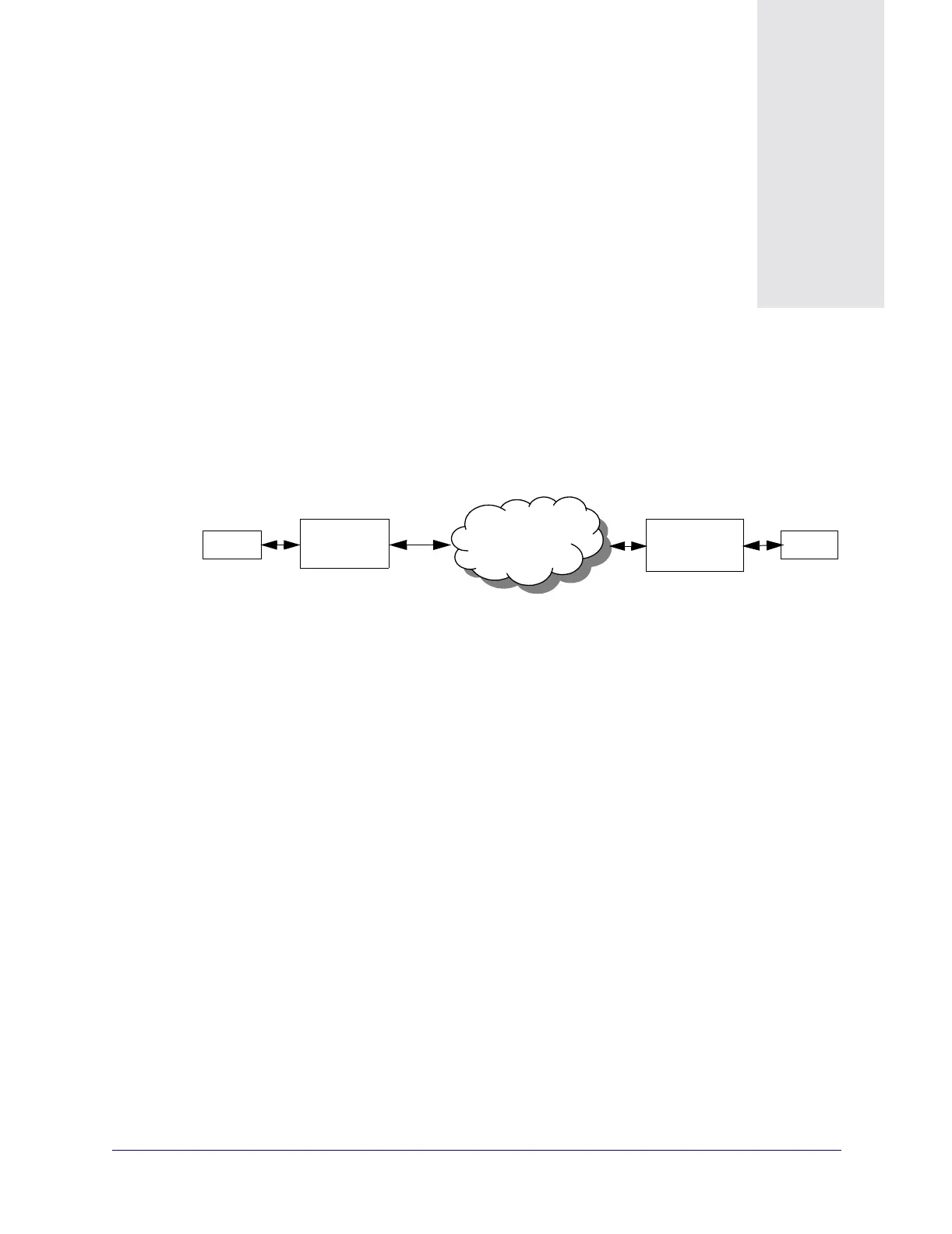ATM Services Configuration Guide for CBX 3500, CBX 500, GX 550, and B-STDX 9000 I-1
Beta Draft Confidential
I
About Trunk Conditioning
Figure I-1 shows a typical circuit emulation (CE) application where two private
branch exchanges (PBXs) are connected through an ATM network using PVCs.
Figure I-1. Typical CE Application
To carry voice traffic between PBXs via a CBX 500 60-Port Channelized T1/E1 CE
module port, one of two methods can be used:
1. DS0 bundle with structured service type and CAS enabled
2. Full DS1 with T1/E1 unstructured service type
When a fault occurs in any connecting path between PBXs, trunk conditioning sends a
busy signal to the DS0 bundle or to the entire DS1, depending on the CE
configuration. Trunk conditioning is the means by which the CE CPE is notified of the
existence of alarm conditions. The actions taken as a result of the failure condition
depends on whether the CE service is structured or unstructured.
Basically, trunk conditioning involves sending a user-selectable “Idle Code” and
“ABCD” trunk conditioning code in the DS0 time slot of a multi-frame. The user sets
the data and signaling values via the NMS when configuring the structured line. Both
the PPort and the LPort are configured with the user selected values and, if the user
does not make an explicit selection, a default IDLE code is used.
The PPort configuration parameters enable trunk conditioning if there is any alarm on
the line or the PPort is under diagnostic session; that is, as soon as Admin Status is
brought down. Once the PPort returns to the normal state, that is, no alarms and
Admin Status is Up, the trunk conditioning data/signaling patterns are disabled and
replaced again by normal live data.
ATM
Network
CBX 500
CE-IWF
CBX 500
CE-IWF
PBX -A
PBX - B
